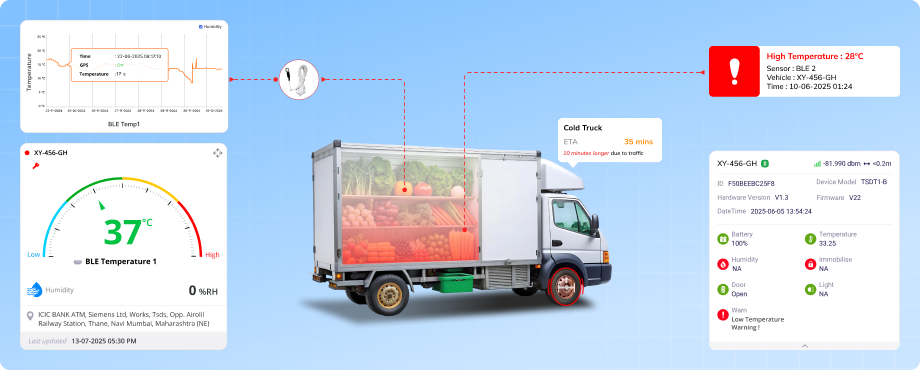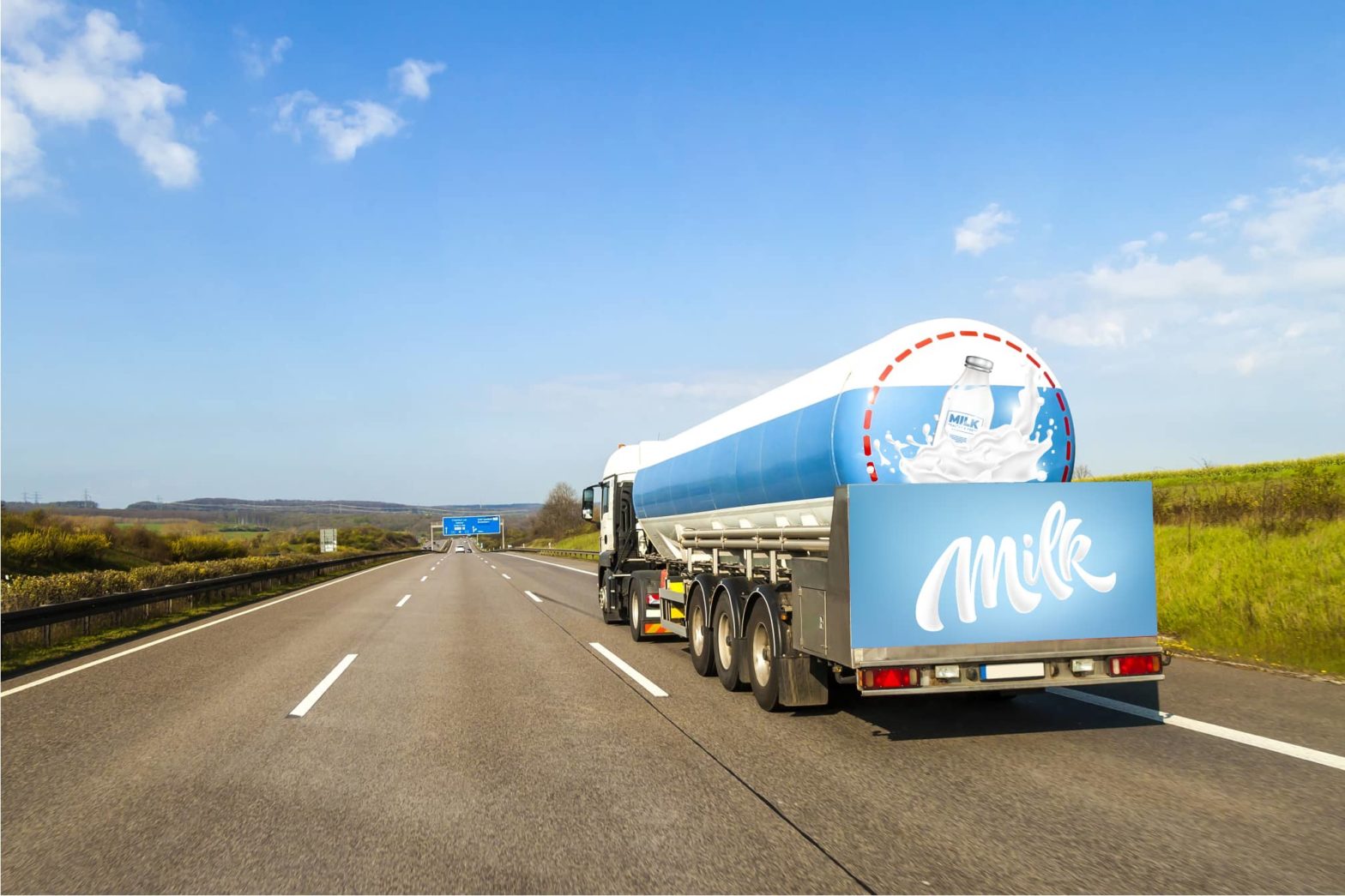In Europe, the cold chain industry plays a critical role in delivering temperature-sensitive goods like dairy, vaccines, frozen foods, and ready-to-eat meals. These items must be transported under strict regulatory conditions to ensure safety and quality. But maintaining the required temperature range throughout the journey is challenging, especially when vehicles cross borders, make multiple stops, or operate in variable climates. Fleet operators must now go beyond basic compliance and adopt real-time temperature monitoring to prevent product spoilage, reduce quality complaints, and meet the growing expectations of both regulators and customers.
Ensuring product safety in Europe’s cold chain with temperature monitoring
Introduction
Challenges
- No real-time visibility into cargo temperature: Cold chain fleets often operate across multiple countries, each with varying climates and compliance expectations. Without live temperature monitoring inside the cargo area, fleet operators are left in the dark throughout the journey. By the time cargo reaches its destination, it’s often too late to address a deviation, resulting in irreversible damage to products that require a constant temperature range.
- Manual temperature logging is error-prone: Many fleet operations still rely on drivers or warehouse staff to manually check and note down temperature readings at certain intervals. This process is not only time-consuming but also fails to capture fluctuations that happen in between logs. Inaccurate or missing entries lead to incomplete records, making it difficult to validate delivery conditions during quality checks or regulatory audits.
- Temperature breaches due to equipment or human error: Cooling systems can fail without warning, and doors may be unintentionally left open during loading or stops. Even a few minutes of exposure to external temperatures can degrade sensitive goods like pharmaceuticals or frozen food. Without automated alerts, these breaches remain undetected during transit and are only discovered after the product quality has already been compromised.
- Delayed driver response to cooling issues: Drivers typically focus on route and delivery schedules and are not notified when the cooling unit begins to malfunction or when temperatures move outside the safe zone. Without a real-time alert system in place, they continue driving without knowing that the cargo is at risk. This delay in response results in lost goods and operational losses that could have been avoided.
- Difficulty in generating audit-ready compliance reports: Cold chain transport in Europe is subject to strict compliance with regulations like GDP (Good Distribution Practice) for pharmaceuticals and HACCP for food safety. These mandates require accurate, timestamped logs of temperature conditions throughout the journey. Without digital tracking and automated reports, fleet operators often fail to meet documentation standards, risking penalties, failed audits, or loss of business from quality-conscious clients.
Solution
- Real-time temperature and humidity tracking during transit: Sensors installed inside refrigerated vehicles continuously capture live temperature and humidity data. Fleet managers can view this information directly on the live tracking screen alongside the vehicle’s route. This helps ensure that goods remain within safe temperature ranges throughout the journey.
- Instant alerts for temperature and humidity: The system sends immediate notifications if the temperature exceeds set limits or humidity levels rise above acceptable thresholds. These alerts reach both managers and drivers so they can take quick action to prevent spoilage or equipment failure.
- Centralized dashboard for fleet-wide monitoring: A temperature-specific dashboard gives operators a complete overview of all vehicles carrying sensitive cargo. It displays current readings, ambient and compartment-specific temperatures, and trends over time. This allows managers to track multiple vehicles from one screen with ease.
- Trip-based temperature reports with location insights: Reports such as Temperature Trip Summary and Daily Summary links temperature data with specific routes, vehicles, and timestamps. This allows managers to identify exactly when and where temperature breaches occurred, making it easier to ensure quality and compliance.
- Automated reports for regulatory audits: All temperature data is automatically logged and organized into downloadable reports. These reports include minimum, maximum, and average readings along with route and date information, helping fleet operators meet GDP, HACCP, and other European compliance requirements.
- Multi-sensor support for complex loads: Each vehicle can be equipped with multiple sensors to monitor different zones or compartments. This helps maintain separate temperature conditions for various types of goods in the same vehicle, supporting safe and compliant transport across long distances.
- Remote monitoring through mobile access: Fleet managers can use the mobile application to monitor temperature conditions from anywhere. They can receive alerts, check current readings, and access reports on the go, making cold chain supervision flexible and responsive.
Results
- Up to 35% reduction in cargo spoilage: Continuous temperature tracking and instant alerts helped prevent exposure to unsafe conditions, ensuring that perishable goods arrived in proper condition.
- 50% faster compliance reporting: With automated logs and ready-to-download temperature reports, audit preparation time was cut in half, making regulatory checks easier and more efficient.
- 20% savings in operational costs: Improved route planning and early identification of equipment issues helped reduce fuel use, avoid losses, and minimize unnecessary trips or spoilage-related claims.
Let’s Move Forward, Together
Share your details and we’ll guide you from here.




